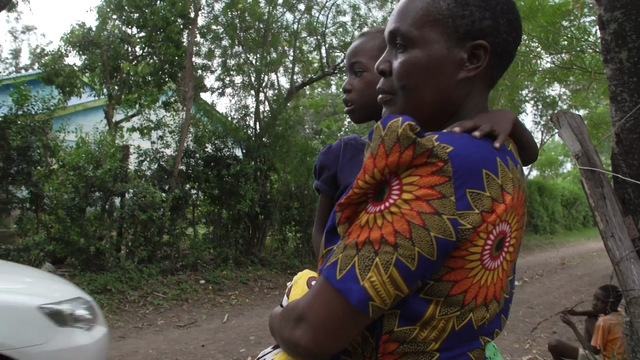Uncovering Sickle Cell Disease
Every day, people endure the painful and life-threatening symptoms of sickle cell disease in the shadows because of fear, stigma,and isolation.1,2,3
Today, on World Sickle Cell Day, Novartis is helping raise awareness on the disease and its complications by sharing a collection of patient stories from around the globe, developed in partnership with physician and photographer, Dr. Alex Kumar. Using the power of words and pictures, this series aims to uncover the real impact of sickle cell disease and show how people are facing this debilitating illness with extraordinary courage. These stories, as well as educational materials, are available on UntoldSickleCellStories.com.
Sickle cell disease is a hereditary and life-threatening condition that causes ongoing vascular damage and repeated injury to the blood vessels and organs.1,4 This lifelong illness often takes an extreme emotional, physical, and financial toll on patients and their families.5,6 It affects people around the globe, with the highest burden concentrated in Sub-Saharan Africa; however, it is also common among people with ancestry in South America, Central America, and India, as well as the Mediterranean.7 An estimated 300,000 babies are born annually with sickle cell disease, and about 300 million people worldwide have the sickle cell trait.5,8
People with sickle cell disease typically experience repeated episodes of sudden severe pain (called vaso-occlusive crises) that can be associated with acute and chronic organ damage.9 Sickle cell pain crises can be unpredictable, severe, and life-threatening, requiring medical intervention, but many patients suffer in silence at home,and do not seek additional help and support.3 Over time, the physical burden of pain crises often negatively affects a patient’s cognitive, emotional, and social well-being, and can be associated with an increased risk of organ damage and death.6
For over 40 years Novartis has been committed to understanding sickle cell disease and working toward providing better treatment options and advancing patient care. At the same time, we continue to pursue ways of making our innovation available and accessible to as many patients as possible. Our efforts include the recent agreement with the Ghana Ministry of Health and the Sickle Cell Foundation of Ghana that aims to improve the screening, diagnosis and treatment of people with sickle cell disease in the country. Read more about our efforts to improve management of sickle cell disease in Ghana.
References:
- Steinberg M. Management of sickle cell disease. N Engl J Med. 1999;340(13):1021-1030.
- Anie K, Egunjobi F, Akinyanju O. Psychosocial impact of sickle cell disorder: perspectives from a Nigerian setting. Globalization and Health. 2010;6(2):3.
- Adegbola M, Barnes D, Opollo J, et. al Voices of adults living with sickle cell disease pain. J Natl Black Nurses Assoc. 2012;23(2):16-23.
- Gutsaeva D, Parkerson J, Yerigenahally S, et.al Inhibition of cell adhesion by anti–P-selectin aptamer: a new potential therapeutic agent for sickle cell disease. Blood. 2011;117(2):727-735.
- American Society of Hematology. State of sickle cell disease 2016 report. http://www.scdcoalition.org/pdfs/ASH%20State%20of%20Sickle%20Cell%20Disease%202016%20Report.pdf. Accessed on March 21, 2019.
- Anim M, Osafo J, Yirdong F. Prevalence of psychological symptoms among adults with sickle cell disease in Korle-Bu Teaching Hospital, Ghana. BMC Psychology. 2016;4(53):1-9.
- Jain D, Lothe A, Roshan C. Sickle cell disease: current challenges. Journal of Hematology & Thromboembolic Diseases. 2015 Nov 10. Doi: 10.4172/2329-8790.1000224.
- Key NS, Derebail VK. Sickle-Cell Trait: Novel Clinical Significance. Hematology. 2010;(1):418-422.
- Kaul D, Finnegan E, Barabino G. Sickle red cell –endothelium interactions. Microcirculation. 2009;16(1):97-111.











